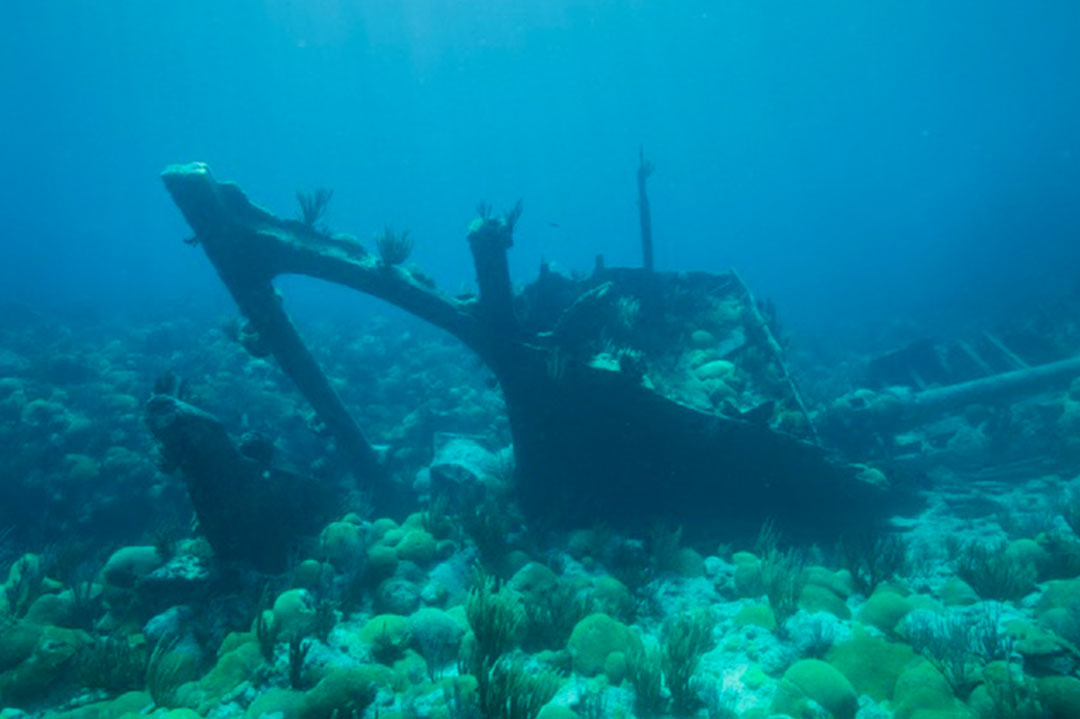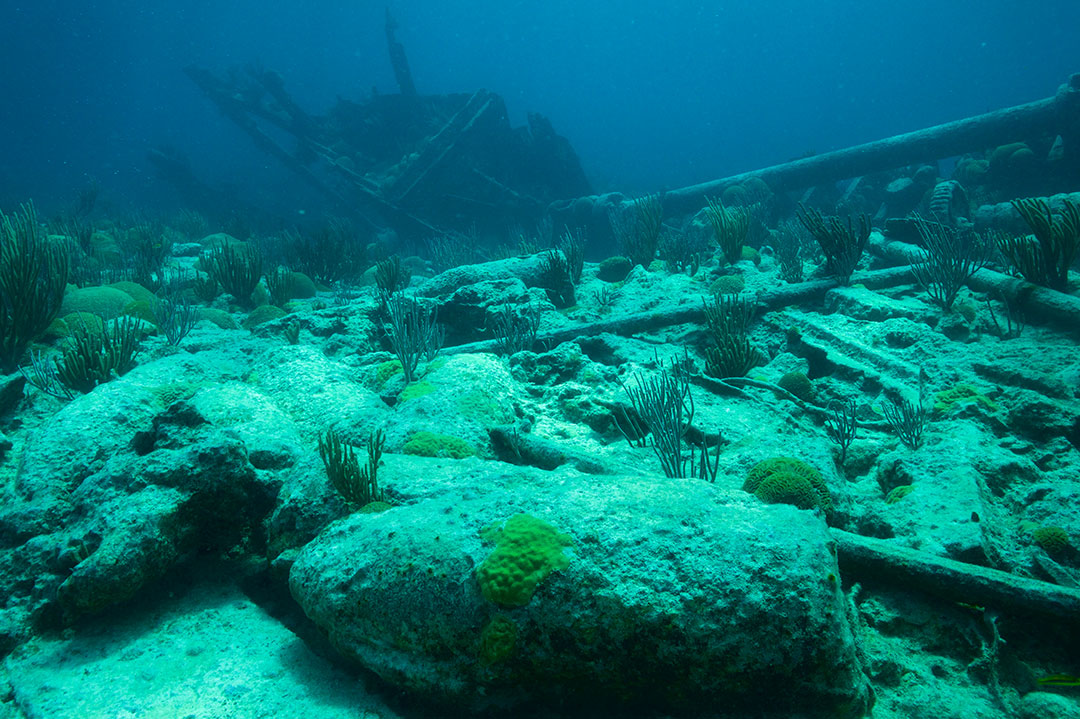Built in 1890 in Hamburg and originally named the Herodot, this large German cargo steamer powered by a 281-horsepower triple-expansion engine was sold in 1904 to the Hamburg America Line and renamed the Graecia. When World War I broke out, the ship was outfitted as a German naval supply vessel and sailed from New York to the Azores in August 1914. The following October, the vessel was captured by the H.M.S. Argonaut. The British Government renamed her the Pollockshields, for use as a munitions carrier.
On August 22, 1915, with a crew of 37 and a cargo of World War I provisions and 350 tons of live ammunition, including shells and gunpowder, the Pollockshields left Cardiff, Wales. In early September, the steamer encountered a ‘white squall’ – with dense fog and hurricane-force winds. When the fog lifted on September 7, 1915, the crew saw the color of the water and knew the ship was in trouble. Ten minutes later, she struck a reef near Elbow Beach. Captain Ernest Boothe sent out a distress signal, waking guests at the South Shore Hotel (now called the Elbow Beach Hotel) and attracting people from all over the island. Rescuers made five trips in a whaleboat through the heavy surf to take the crew ashore. All crew members were rescued, but Captain Boothe was swept overboard and drowned.
CURRENT CONDITION
For years the central section of the wreck, including the ship’s engine, protruded above the water, but many tourists swimming out to the wreck were injuring themselves on the coral covering the wreckage. In 1960 the government hired Teddy Tucker to blow the legs off her engine to demolish the visible superstructure. Today the wreckage can be found scattered in up to 40 feet of water on the coral bottom. Two boilers, a propeller and the ship’s triple-expansion engine are visible, as are live ammunition and shell casings. Most of them have been cleared since 1999 by the Bermuda marine police in conjunction with divers from the British military to ascertain the quantity and types of munitions exposed at the site. After major storms, new munitions occasionally become exposed, but it happens less and less often. The Pollockshields remains one of the most noteworthy of Bermuda’s 20th-century shipwrecks due to its longtime visibility, cargo of live ammunition, and historic (and heroic) rescue effort. The ship is part of the Bermuda Shipwreck Certificate Program.
STATISTICS
Location: 32°16'17.00"N, 64°46'11.00"W Length: 323 feet (98.5 meters) Tonnage: 2,744 tons Maximum Depth: 40 feet (12 meters)









